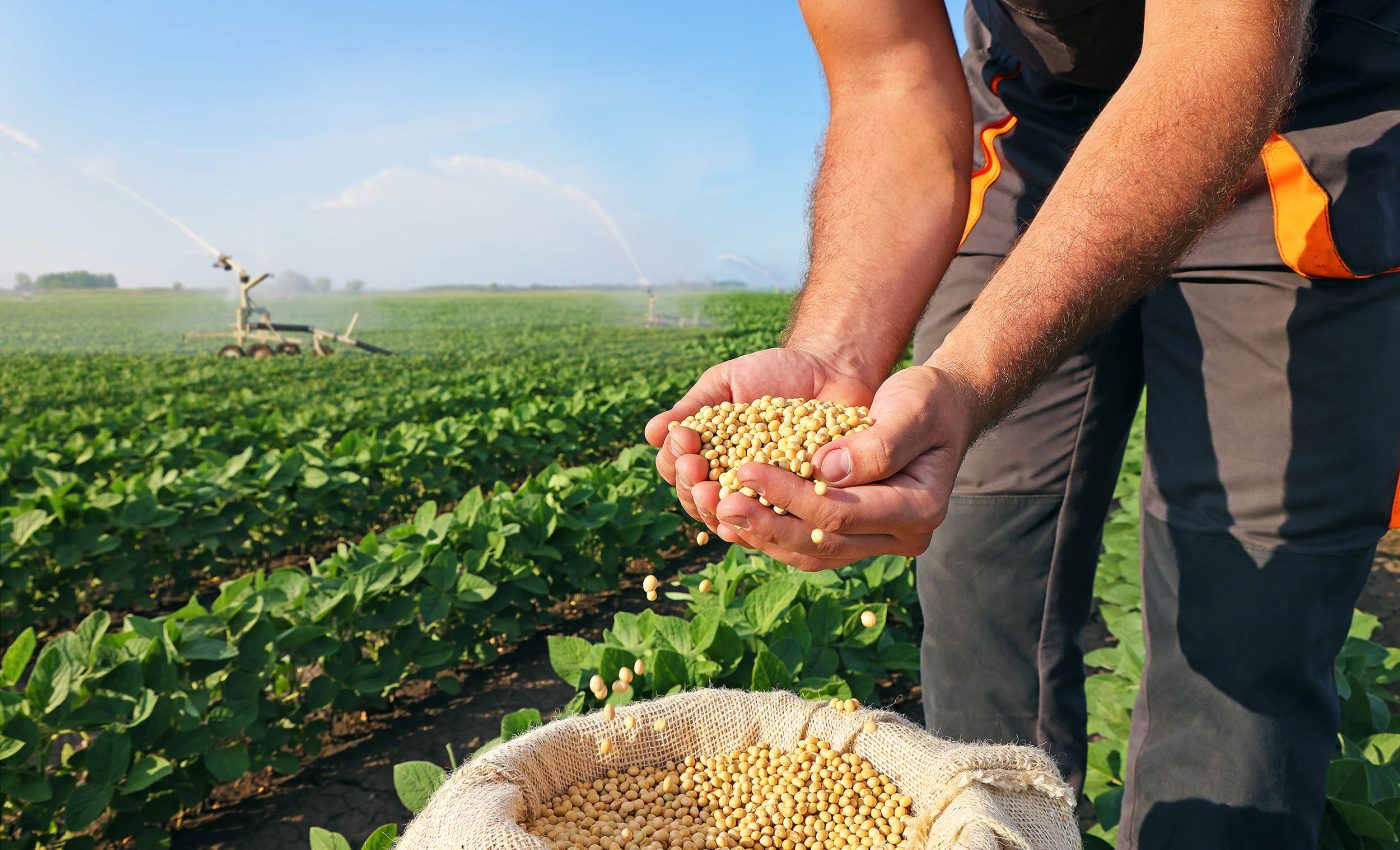
This cheap metal could be the key to growing stronger and healthier crops
Many countries already add lanthanides, a group of rare earth metals, to fertilizers to support crop growth. Yet despite their widespread agricultural use, researchers still didn’t fully understand how plants absorb these elements or how they influence essential processes like photosynthesis.
But recent research offers new insight into how these elements operate inside plants – and how they might be used more efficiently.
Rare earth metals in farming
Scientists at the Massachusetts Institute of Technology (MIT) have found that a single nanoscale dose of lanthanides applied to seeds can help some of the world’s most widely grown crops resist damage from ultraviolet (UV) light.
Their work shows that these rare earth metals can interact with chlorophyll – the pigment that powers photosynthesis – by replacing the magnesium at its center. This replacement strengthens the pigment and improves the plant’s response to UV stress.
“This is a first step to better understand how these elements work in plants, and to provide an example of how they could be better delivered to plants, compared to simply applying them in the soil,” said Associate Professor Benedetto Marelli, who conducted the study with postdoc Giorgio Rizzo.
“This is the first example of a thorough study showing the effects of lanthanides on chlorophyll, and their beneficial effects to protect plants from UV stress.”
Metals do more than grow food
Lanthanides aren’t just for agriculture. They’re also used in a variety of industrial and medical applications, from contrast agents in MRI scans to components in solar cells, lasers, and LED lights.
The rare earth metals now play a much larger role in crop production. In China especially, farmers apply lanthanide-enriched fertilizers to nearly 4 million hectares of farmland each year.
“Lanthanides have been considered for a long time to be biologically irrelevant, but that’s changed in agriculture, especially in China,” confirmed Rizzo.
“But we largely don’t know how lanthanides work to benefit plants – nor do we understand their uptake mechanisms from plant tissues.”
Some recent studies suggest that these elements can promote growth, root development, hormone synthesis, and stress tolerance. However, too much lanthanide can be harmful.
The trick is finding the right balance – and that means understanding how they move through plant tissues and interact with the cells.
Re-greening crops with lanthanides
To explore this, the MIT team used a seed coating and treatment method they had previously developed. This allowed them to study the interaction between chlorophyll and lanthanides both inside and outside the plant.
Chlorophyll is vital to photosynthesis. But when the pigment loses the magnesium ion at its core, it can no longer absorb light efficiently.
The researchers discovered that certain lanthanides can take the place of magnesium. This substitution helps chlorophyll regain some of its functional ability – a process called “re-greening.”
“We found that lanthanides can boost several parameters of plant health,” Marelli said. “They mostly accumulate in the roots, but a small amount also makes its way to the leaves, and some of the new chlorophyll molecules made in leaves have lanthanides incorporated in their structure.”
Metal offers sun defense for crops
The team also discovered something surprising: lanthanides increased the plants’ ability to withstand UV stress – something no one had anticipated.
“Chlorophylls are very sensitive pigments,” Rizzo explained. “They can convert light to energy in plants, but when they are isolated from the cell structure, they rapidly hydrolyze and degrade.”
“However, in the form with lanthanides at their center, they are pretty stable, even after extracting them from plant cells.”
Using advanced spectroscopic tools, the researchers tested their findings on several staple crops – including chickpea, barley, corn, and soybeans. The benefits held across all of them.
Lanthanides could protect food security
With extreme heat and more frequent climate events threatening global food systems, solutions like this could become increasingly important.
“As we move into an environment where extreme heat and extreme climate events are more common, and particularly where we can have prolonged periods of sun in the field, we want to provide new ways to protect our plants,” Marelli said.
“There are existing agrochemicals that can be applied to leaves for protecting plants from stressors such as UV, but they can be toxic, increase microplastics, and require multiple applications. This could be a complementary way to protect plants from UV stress,” he said.
Cheap lanthanides shows big potential
Among the lanthanides studied, lanthanum – a relatively large and low-cost element – stood out for its effectiveness in strengthening chlorophyll.
Mining operations typically view lanthanum as a low-value byproduct of extracting rare earth elements. But this new use could turn that status around.
“This study shows what we could do with these lower-value metals,” Marelli said. “We know lanthanides are extremely useful in electronics, magnets, and energy.”
“In the U.S., there’s a big push to recycle them. That’s why for the plant studies, we focused on lanthanum, being the most abundant, cheapest lanthanide ion.”
Next stop: greenhouses and beyond
The team isn’t stopping with plants. They also plan to look into how lanthanides interact with other biological molecules, including proteins in the human body.
On the agricultural side, their next step is to test their findings in greenhouses and experimental farm settings, scaling up their work and exploring how different crops respond to metal-based UV protection.
“Lanthanides are already widely used in agriculture,” Rizzo said. “We hope this study provides evidence that allows more conscious use of them and also a new way to apply them through seed treatments.”
The full study was published in the Journal of the American Chemical Society.
—–
Like what you read? Subscribe to our newsletter for engaging articles, exclusive content, and the latest updates.
Check us out on EarthSnap, a free app brought to you by Eric Ralls and Earth.com.
—–













